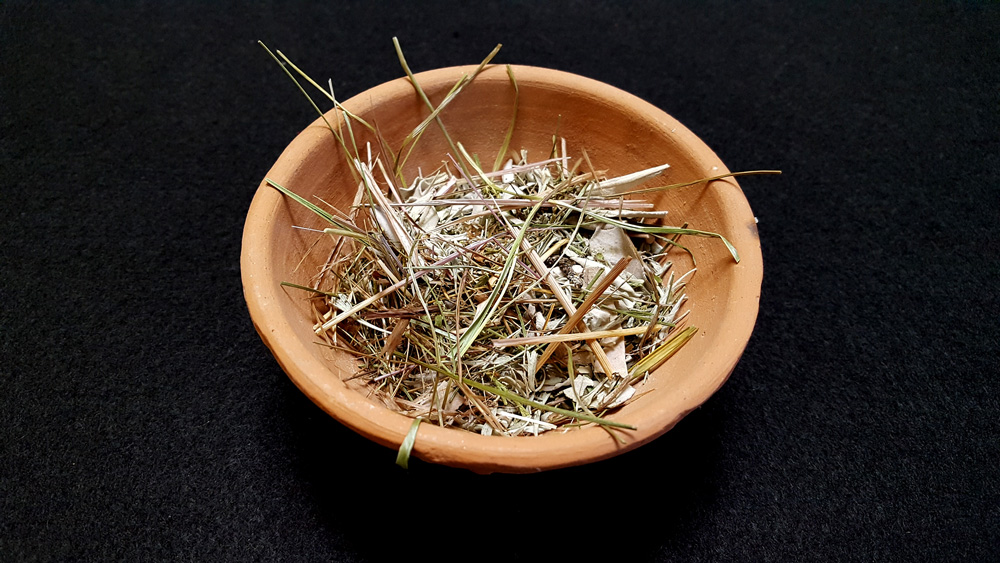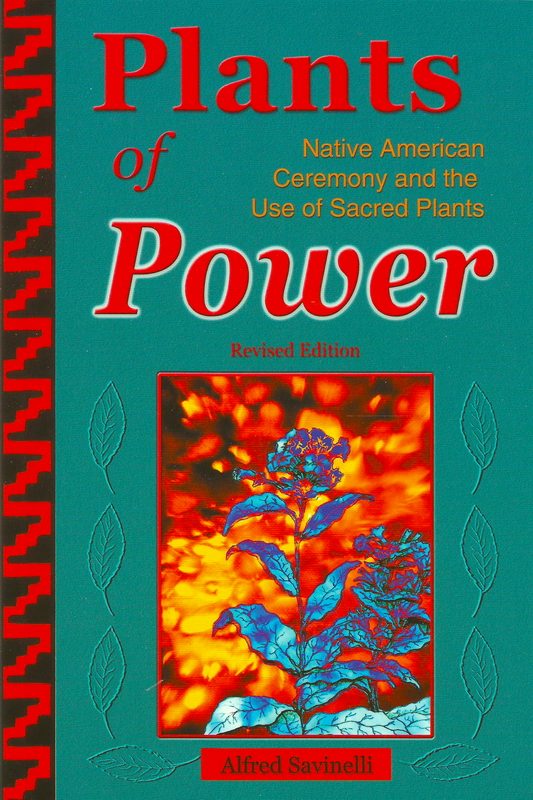Published: Friday, 24 February 2017 14:02
Desert Sage ~ White Sage ~ Juniper ~ Sweetgrass
Our ceremonial blend is a mix of sacred North American herbs which includes Desert Sage (Artemisia tridentata), White Sage (Salvia apiana), Juniper (Juniperus scopulorum) and Sweetgrass (Hierochloë odorata).
We recommend placing a little of this mix on embers of your fire, hot rocks or a charcoal disk. You can also light a some in an incense bowl or Abalone shell and waft the smoke around your body, objects, pets or any space you wish to purify and bless.
 Desert Sage
Desert Sage
Desert Sage (Artemisia tridentata) grows in semi-arid climates throughout the western mountains of North America. Our desert sage is harvested from the Taos area in New Mexico. The active medicinal constituents are camphor, terpenoids, and tannins. It’s most commonly used by Native Americans for smudging (purifying with smoke) and in ceremony. Different tribes have different uses for it, from treating headaches and colds, preventing infections of wounds to treating body aches, athlete’s foot and as a foot deodorant. It can be used in a tea but is not recommended due to the known toxicity of the constituents to the liver and digestive system.
White Sage
White Sage (Salvia apiana) only grows in, southern California and Baja Mexico. White Sage is a perennial shrub with strong aromatic properties of cineole, camphor, pinenes and a little limonene. It’s historic uses were seeds as food. It’s a known antibacterial, antifungal, antiviral and rubefacient. It’s also used for smudging and in ceremony.
White sage grows along the sunny coastal alluvial washes of Southern California, from Santa Barbara to the Baja Peninsula along the coast before the desert. White sage is an important member of the coastal sage scrub plants, growing 2′ to 3′ tall. It produces a flower spike that is light blue in color. The flower spikes produce a nectar and develop many seeds. The seeds have been important and potent food sources for wildlife and humans. The leaves vary from a matte green to a dull white, depending on the time of year. The leaves contain fragrant essential oils.
Today white sage is most popular for the sweet fragrance of its burning leaf. It is used to cleanse objects, places and people. The family Salvin, from the Latin, Salvia (to heal), has many historical uses. Medicinally, white sage has been used as a tonic and as an antiseptic. Sage tea is said to promote a calming effect. Two leaves in a cup of hot water makes a healthful beverage, and the leaves may be chewed as a natural breath freshener.
Traditional elders say that before a person performs ceremony or is healed, they need to be cleansed of any bad feelings or negative thought. The cleansing can be done with sage, sweetgrass or cedar. The smudging helps the healing come about in a very clear way, without any negative energy regarding the healer or the patient. The elders also say that one should enter into ceremony with a good heart.
The proper way to dispose of sage is to throw it eastward rather than burn it or put it down.
White sage has come from relative obscurity twenty years ago to great popularity in recent years. People are attracted to its aroma and calming properties. The largest threat to its continued existence is loss of habitat through development of housing. Being part of the coastal scrub habitat there is a growing interest to preserve this unique plant community within private and public sectors.
 Juniper
Juniper
Juniper(Juniperus scopulorum) grows in The Rocky mountains of New Mexico And Colorado It’s a deciduous evergreen with blue berries. We harvest our Juniper from our local Northern New Mexico mountains. However it’s smoke was and is widely used to cleanse a space and drive out evil spirits. In ceremonials, the plant serves to dispel negative forces from the environment. In its medical uses, the volatile oil expels toxins from the body and tonifies the eliminative systems. For these reasons the incense of Juniper may be considered a banishing smoke. The nature of the plant may be understood as a purgative.
Juniper knots burn slowly, and will give off a clear smoke, which is why it is desired for feasting and ceremonial fires and is frequently used in fires. When a patient was celebrating the recovery of a long illness, the medicine man and his assistants will make gestures of “throwing the disease away.”
Navajo women put a bracelet of dried juniper berries on the babies before they put them to bed. These beads are called “ghost beads” and they keep their children from having bad dreams. To make the ghost beads, the mothers scatter the fresh ripe berries over tall anthills. After several minutes, the busy ants will eat out the center, leaving the desired perforation necessary for stringing the beads.
In the Navajo ceremonials, “Gad bika’igii” is used as an emetic. The juniper is ingested, and the initiate is purified by vomiting. Juniper is also used for making many ceremonial items.
Sweetgrass
Sweetgrass (Hierochloe odorata) grows in marshy areas above 40 degree latitude. Ours often comes from Northern Manitoba, Canada by our Cree and Ojibwe friends. It has a sweet smell when burned or moistened which is due to its coumarin content. It’s traditionally used in Native North American prayers and ceremonies to attract benevolent spirits or positive energies. It’s also sometimes used in smoking blends and made into teas.
We gather and provide tools for ceremony, ritual and personal transformation. We hope you find our description useful and enjoy our products.
Buy our 2 ounce Ceremonial Blend here.


